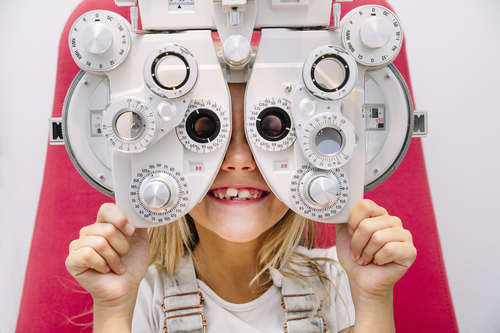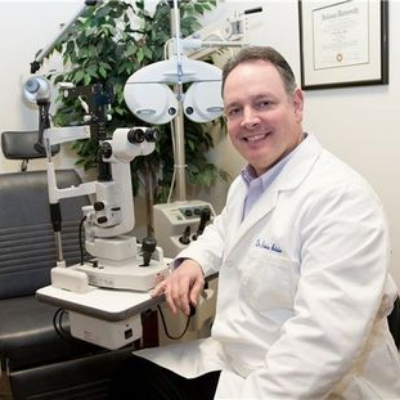Check Out the Best Optometrist Chino for Comprehensive Eye Care
Check Out the Best Optometrist Chino for Comprehensive Eye Care
Blog Article
Exploring the current Technical Innovations in Optometry and What They Mean for Optometrists
In the ever-evolving area of optometry, current technical developments are reshaping just how specialists approach eye treatment. From the precision of Optical Comprehensibility Tomography to the nuanced understandings offered by AI-driven analysis tools, these developments are establishing new standards in patient evaluation and therapy. Teleoptometry is poised to redefine ease of access, making certain that proficiency goes beyond geographical constraints. As these advancements penetrate the practice, eye doctors are confronted with the obstacle of embracing these tools to boost client results. The inquiry continues to be: exactly how will these technological changes redefine the functions and responsibilities within the profession?
Innovations in Diagnostic Devices
Advancing the area of optometry, advancements in analysis devices have transformed the method eye care specialists assess and diagnose aesthetic impairments and eye problems. The past years has actually experienced significant technological developments, enabling more precise and extensive evaluations.
An additional key innovation is the intro of sophisticated corneal topography systems, which map the surface curvature of the cornea with accuracy. These devices are particularly helpful for fitting get in touch with lenses and detecting corneal conditions. Moreover, electronic retinal imaging has actually transformed conventional ophthalmoscopy, using detailed, scenic sights of the retina that help with comprehensive visual examinations.
The development of wavefront aberrometry has additionally been crucial, allowing the analysis of refractive mistakes with unrivaled accuracy (Optometrist Chino). This modern technology aids in tailoring restorative lenses and boosting medical end results for refractive surgical procedures. Collectively, these diagnostic advancements encourage eye doctors to provide superior person treatment, making sure early treatment and customized treatment methods, eventually improving visual health outcomes
AI in Person Monitoring
Building on the foundation of cutting-edge diagnostic devices, the unification of expert system (AI) in person administration stands for a transformative leap for optometry. AI systems are increasingly utilized to boost performance, precision, and personalization in client treatment. By evaluating vast amounts of data, AI can identify patterns and predict prospective ocular conditions, allowing optometrists to customize treatments better. This capacity is vital in handling chronic eye diseases such as glaucoma and diabetic retinopathy, where very early discovery and continual tracking are vital.
Furthermore, AI-driven platforms help with structured client communications and management processes. Automated scheduling, digital assessments, and personalized follow-up plans not just improve patient satisfaction yet additionally enhance time monitoring for specialists. These systems can triage people based upon the necessity of their problems, ensuring that those in essential requirement receive timely attention.
In addition, AI boosts decision-making by providing optometrists with evidence-based referrals and therapy paths. By integrating data from electronic health documents, AI tools use insights that inform scientific decisions, lowering the risk of mistakes and enhancing person outcomes. As AI remains to advance, its function in individual monitoring will likely increase, improving the landscape of optometric treatment.
Advances in Retinal Imaging
In the realm of optometry, retinal imaging has actually witnessed impressive technological improvements that are enhancing analysis capacities and patient treatment. Technologies such as Optical Comprehensibility Tomography (OCT) and fundus digital photography have actually transformed just how eye doctors evaluate the retina and picture.
Boosted imaging methods like OCT angiography are further refining diagnostic accuracy. This non-invasive strategy maps blood flow in the retina, offering vital insights into vascular wellness without the requirement for dye shots. In addition, flexible optics innovation is being incorporated into retinal imaging systems to remedy ocular aberrations, delivering extraordinary image quality. Such innovations help with the recognition of min retinal modifications that could signify illness development.
Moreover, improvements in synthetic knowledge are augmenting retinal imaging by enabling computerized evaluation of big datasets. These systems assist eye doctors in determining patterns a sign of pathology, thus boosting diagnostic accuracy and efficiency. Collectively, these developments are changing retinal imaging right into a foundation of modern eye treatment, improving end results and increasing healing possibilities.
Teleoptometry's Growing Role
Teleoptometry is increasingly coming to be a vital element of eye care, driven by improvements in electronic communication and analysis devices. As optometry embraces electronic change, teleoptometry promotes remote assessments, enabling optometrists to prolong their solutions past traditional borders. This is particularly useful in underserved and country locations where accessibility to specialized eye treatment is typically restricted. By leveraging high-resolution video conferencing and progressed retinal imaging, optometrists can conduct detailed eye exams from afar, making certain timely diagnosis and therapy.
The integration of synthetic intelligence (AI) more improves teleoptometry, allowing the evaluation of visual information and assisting in the detection of ocular problems such as glaucoma and diabetic retinopathy. AI-powered formulas can quickly translate intricate imaging information, giving optometrists with valuable insights that bolster professional decision-making.
In addition, teleoptometry supports connection of care through smooth assimilation with digital health records (EHRs), allowing optometrists to preserve detailed person backgrounds. This makes sure that individuals receive regular and customized care even when talking to various experts.
In spite of these advantages, difficulties continue to be, including ensuring data protection and managing person expectations. Teleoptometry represents a considerable stride towards more obtainable, effective, and patient-centered eye treatment. As innovation advances, its role is positioned to broaden further.

Future Trends in Eye Treatment
A myriad of innovative patterns is set to reshape the Read More Here future of eye care, driven by technical advancements and the progressing needs of individuals. One significant trend is the combination of man-made intelligence (AI) in diagnostics, which assures to improve the precision and efficiency of eye examinations. AI algorithms can examine substantial quantities of information from retinal images, potentially identifying problems like diabetic person retinopathy and glaucoma earlier than conventional methods.
Additionally, customized medication is gaining traction in optometry, with hereditary screening educating personalized treatment strategies. This method intends to enhance person outcomes by customizing interventions to specific hereditary profiles. Wearable technology, such as wise get in touch with lenses, is also coming up, offering real-time monitoring of intraocular pressure or glucose levels, hence providing continual understandings right into ocular and systemic wellness.
The adoption of increased truth (AR) and virtual truth (VIRTUAL more REALITY) in training and person education is an additional arising trend. These innovations provide immersive experiences that can improve understanding and abilities both for patients and eye doctors. As these fads develop, eye doctors must remain abreast of technological improvements to provide innovative care, making certain improved client outcomes and complete satisfaction in the dynamic landscape of eye treatment.
Final Thought

Jointly, these analysis improvements equip eye doctors to supply remarkable person care, making certain very early intervention and customized therapy methods, eventually enhancing visual wellness end results.

As these modern technologies proceed to evolve, optometrists should adjust and incorporate them into practice, eventually maximizing workflow performance and boosting the requirement of eye treatment supplied to individuals.
Report this page